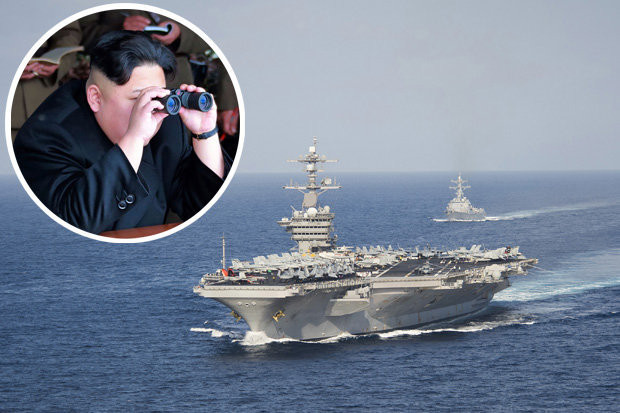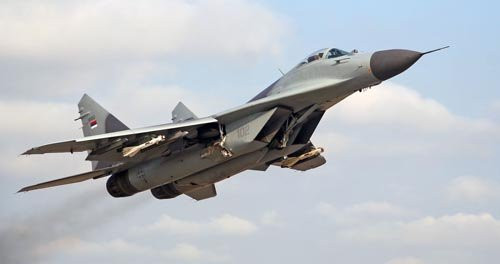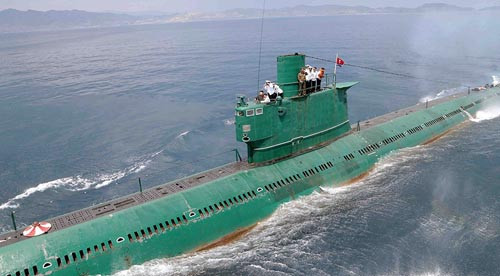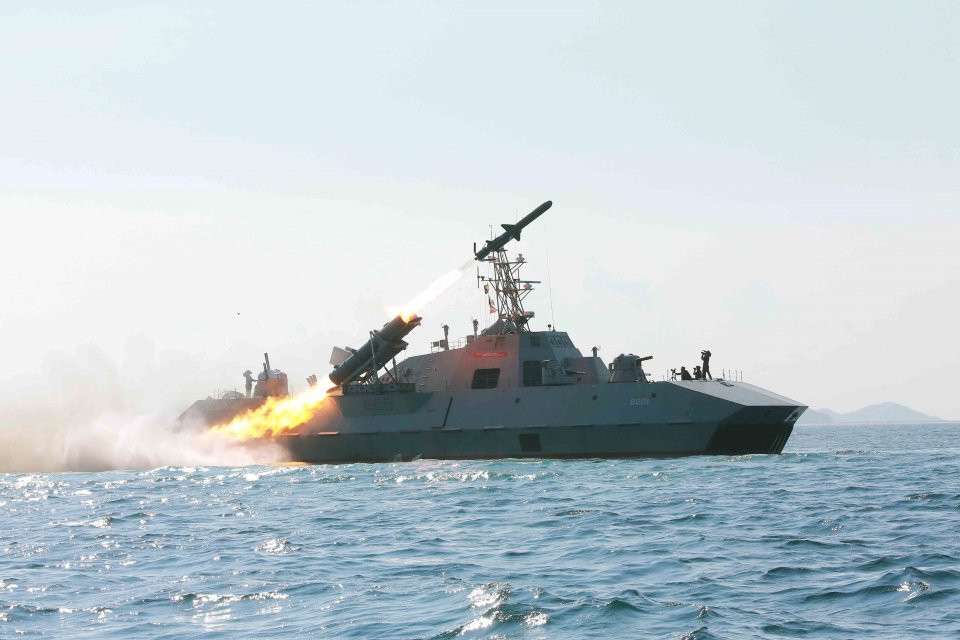What move did North Korea make to sink a US aircraft carrier?
North Korea recently declared its readiness to sink a US nuclear aircraft carrier with just one blow, but how can Pyongyang materialize this?
As the US aircraft carrier strike group USS Carl Vinson is about to arrive on the Korean peninsula, Pyongyang has issued one of its toughest statements yet.
 |
North Korea declared on April 23 that it was ready to sink a US nuclear aircraft carrier. |
"The North Korean army is ready to sink a US nuclear-powered aircraft carrier with a single strike. This is a typical example for us to show our power," Rodong Sinmun, the official newspaper of the North Korean Workers' Party, wrote.
But is there any way for North Korea to materialize this statement? Sinking a US nuclear aircraft carrier that is more than 300 meters long and has a displacement of 100,000 tons is unprecedented in history.
According to expert Robert Faley, senior lecturer at the Patterson School of Diplomacy and International Commerce, University of Kentucky (USA), the most important issue in sinking an aircraft carrier is the connection between the reconnaissance system and weapons. Submarines, surface ships, and aircraft cannot fire if they do not know where the enemy aircraft carrier is.
Even a supersonic cruise missile would take 20 minutes to hit its target at its longest range. In the same time, a US nuclear aircraft carrier could have moved 16km further.
It has taken the US more than 30 years to develop and effectively operate a real-time reconnaissance system, ensuring that warships, aircraft and submarines can fire weapons accurately on targets.
So far, no other country has comparable capabilities, not even Russia and China, let alone North Korea, said expert Robert Farley.
Without the ability to destroy a moving target from a distance, North Korea is forced to resort to close-in approaches, which pose great risks with little guarantee of success.
MiG-29 fighter
National Interest cited a Pentagon report submitted to the US Congress in 2015 stating that the North Korean Air Force (NKAF) possesses more than 1,300 aircraft, of which about 563 are fighters. However, most of these aircraft are outdated and only capable of defending airspace.
 |
Serbian Air Force MiG-29 fighter. |
Most notable among North Korea's modern aircraft is its fleet of about 35 Mikoyan MiG-29 fighters. These are fighters primarily designed to destroy aerial targets.
North Korea may modify the MiG-29 version to carry ground attack weapons with Russian assistance. The MiG-29 has a relatively short range, with a maximum range of about 1,400km, increasing to 2,100km with external fuel tanks.
Meanwhile, the F/A-18E/F Super Hornet fighter jets operating on US aircraft carriers have a combat radius of about 722km and a maximum range of about 2,300km. These fighter jets have enough time to engage before the North Korean aircraft squadron approaches the US aircraft carrier.
In addition, North Korean fighters also have to face the Aegis air defense system of US destroyers escorting aircraft carriers. Close-in defense layers on nuclear aircraft carriers include RIM-7 Sea Sparrow missiles with a range of 50km, 3-4 Phalanx 20mm close-in air defense artillery systems.
Therefore, North Korean fighter jets are almost incapable of approaching to fire surface-to-surface missiles or large bombs at US aircraft carriers.
Diesel-electric submarines
Experts say that although the North Korean Navy possesses the world's largest submarine fleet, its actual combat capability is very low.
 |
North Korean submarines have become outdated and are not strong enough to compete with US aircraft carriers. |
Most notable among these is the Chinese-made diesel-electric submarine, the Type 033.
The North Korean Navy currently possesses about 20 Type 033s, with a design from World War II. The ship has a displacement of 1,830 tons, is 76.7 meters long and 6.7 meters wide.
The ship is equipped with two 2.94 MW diesel engines and two 2-shaft electric motors, giving a maximum speed of 15.2 knots when surfaced and 13 knots when submerged, a range of 14,484 km, and a crew of 54 people including 10 officers.
The Type 033's armament includes eight 533mm heavyweight torpedoes (six forward and two aft), sensors including radar and sonar, and the MRP 11-14 electronic warfare system.
In 2010, a North Korean submarine is believed to have entered South Korean waters and torpedoed the warship Cheonan, killing 46 sailors.
However, the possibility of North Korea's outdated submarine fleet stalking, approaching and launching large torpedoes at a US aircraft carrier is very unlikely. With a maximum speed of 56 km/h, the nuclear aircraft carrier USS Carl Vinson can easily "lose the tail" of many modern submarines today.
Anti-ship missile fleet
 |
North Korea test-fired a Kh-35 anti-ship missile from a destroyer in 2015. |
Rodong Sinmun newspaper said that in 2015, Pyongyang tested a new type of modern anti-ship missile, identical to the Russian version of Kh-35.
With a warhead weighing 145kg, the Kh-35 is said to be capable of sinking a warship displacing about 5,000 tons with one shot. The Kh-35 complex can be mounted on North Korea's high-speed missile boats.
However, the possibility of success is very low because the US aircraft carrier strike group has very strong defense capabilities. A single Kh-35 missile is not enough to sink the USS Carl Vinson aircraft carrier, but dozens of such anti-ship missiles are needed.
The last option is the possibility that North Korea could detonate a nuclear weapon near the US aircraft carrier. The massive explosion would destroy everything on a large scale, helping Pyongyang achieve its “one shot” goal. But the scenario of nuclear war is something no one in the world wants.
According to Dan Viet
| RELATED NEWS |
|---|
